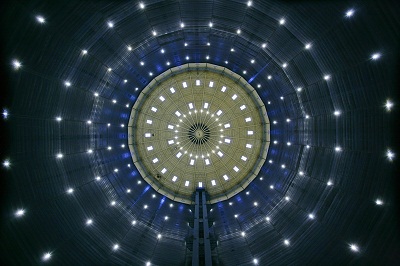Industrial Culture

The Gasometer is more than just an industrial monument. Since its decommissioning about thirty years ago it has developed into the landmark of the city of Oberhausen and, beyond that, it has become an entire region's identification sign that cannot be overlooked. Built in the late 1920's, Europe's largest disc-type gas holder is an impressive reminder of the heavy industry that characterised the Ruhr for more than a century.
Whoever enters the Gasometer, does not, however, only get an impression of great engineering skill. The recognition of the technical achievements of industrialisation is mingled with the fascination of the unique space experience which this gigantic 'cathedral of industry' conveys. Today the Gasometer provides the unique frame for cultural experiences of various kind. Exhibitions, theatre and music are made viable and can be rediscovered and experienced with all the senses. As a venue it inspired artists of international relevance.
In this connection, Oberhausen's Gasometer acquires supra-regional importance. It is the anchor point of the 'Route of industrial culture', a thematic tourist route designed by the Regional Association of the Ruhr which links the most important and attractive industrial monuments in the region with one another. Since October 2006, the Gasometer has, in addition, been part of the 'European Route of Industrial Heritage' (ERIH). It links approximately sixty milestones of industrial history of particular interest to tourists, in the United Kingdom, the Netherlands, France, Luxembourg and Germany. Special thematic routes lead to historically important locations of industrial heritage in Europe.

